What Size Longboard Surfboard Should I Get
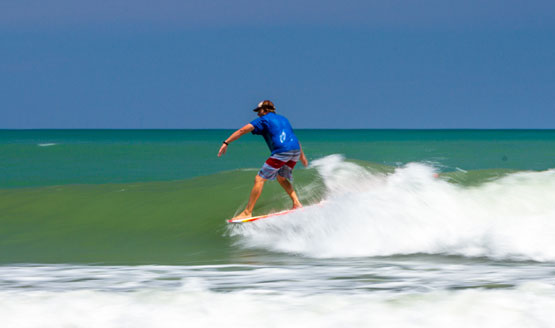
Wow, this is a wide range of surfers reading this article! Beginner and never-evers, all the way geographic transplants, diehard longboarders and crumbling shortboarders. Over the by several seasons, the surfing world has been focused on shortboards and hybrids, now information technology'southward time to dig into the tech and questions asked and answered every day at Real with regards to longboards.
Video Instructional:
Question #1 : How do you want to surf and where will you be surfing this board? Exercise yous see yourself equally a cross stepper / noserider? Or practice you want to surf more off the tail and use the length of the board to generate loftier speeds for fast turns and carves? Is you local wave soft and irksome breaking or a pitchy beach suspension with a more than hollow face?
When looking at longboards, there are two basic types – "Noseriders" and "High Functioning" longboards.
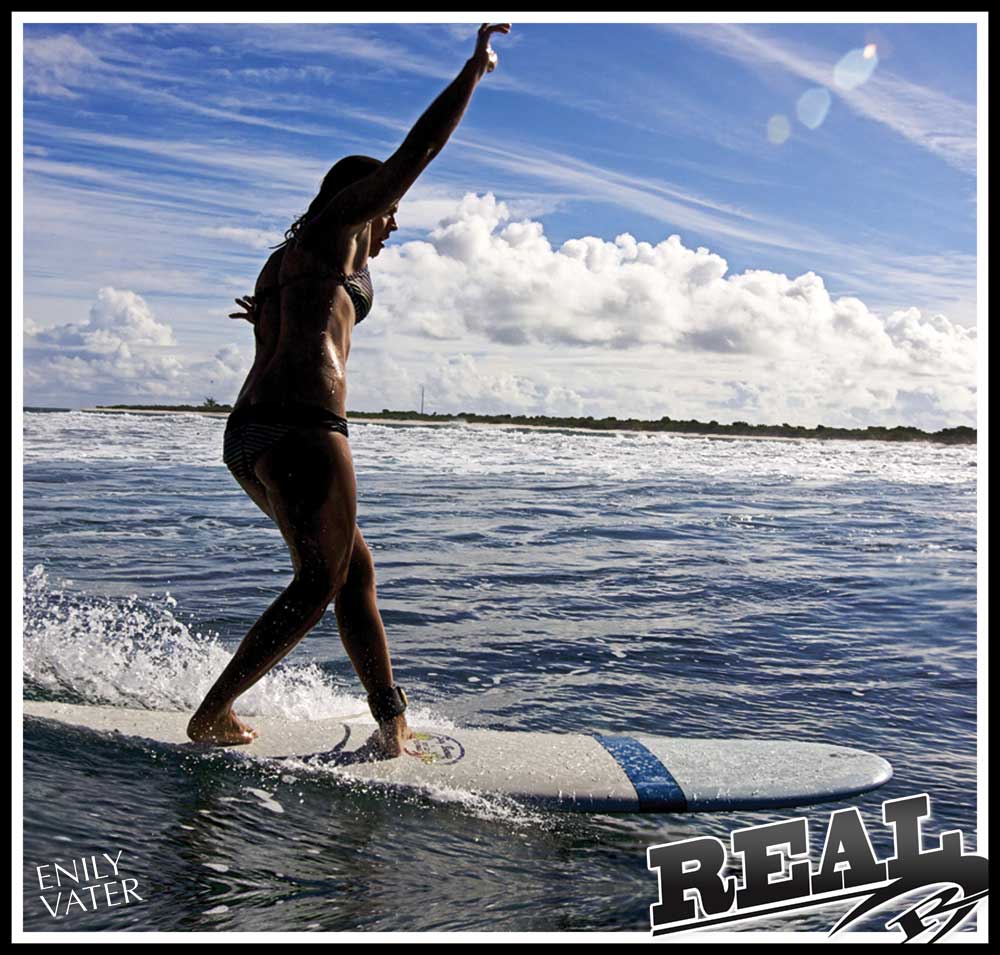
Noseriders tend to have more book (more foam), a flatter rocker, wider noses and rounded runway all the manner to the tail. Most noseriders likewise have a single fin, although some are equipped to switch this to a 2+1 set upwards which consists of small "side seize with teeth" fins on the rails and a larger fin in the center box. This style of board is great for several things – trimming, gliding, noseriding and too longboarding at a break that suits this way of board. The larger size, flatter rocker and glide oriented design suits a flatter faced wave that is slower and softer breaking. Think of places like San Onofre, California or Ditch Plains in Montauk, NY. Fifty-fifty when those waves are caput loftier, they are still very forgiving, dull breaking with a very soft lip.
The design focus of a noserider longboard is to keep the board in the pocket of the wave and to allow the surfer to surf small crumbly waves (often dribblers) while yet feeling the "glide" of the board across the pinnacle of the water. "Glide" is the power of the board to displace h2o at speed and not be then dependent on planning above the water similar narrower high functioning longboards or shortboards. More book and often a flat or slightly convex (bellied) lesser brand this type of board work well both gliding and planning. These boards also encourage "cross stepping" to the nose and are great "dance platforms" for walking to and from the nose during each ride.
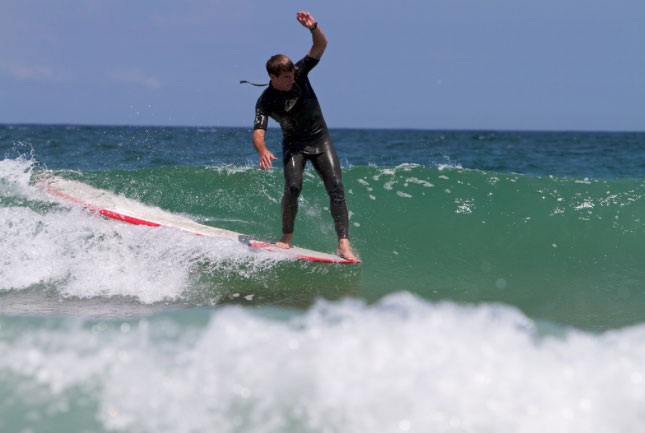
Desire to exist humbled? Go on an all out mission to larn proficient and stylish noseriding this summertime. You're virtually to receive the 1ft surf beat downwardly of your life in waves yous normally wouldn't have even paddled out in. Once you start pulling noserides – and with the right board it's not that far away – it'due south an addictive feeling that has you "flying" at the tiptop of the moving ridge with cipher underneath you. I actually didn't learn how to noseride until I was forty years old and to have the ability to learn something new in junk surf was really really fun and rewarding. Some of the wipeouts are merely incredible! But when yous pull off a good one, it's so much fun and such an adrenaline blitz…definitely something to keep your learning curve fresh and heady!
Good examples of noseriders are all sizes of the Robert August Retros, Robert Baronial Classics, Robert August Martinson Stepdecks, the larger Robert Baronial What I Rides (ix'half dozen and larger) and Takayama Model Ts. Takayama In the Pinks are some of the virtually popular noseriders in the earth, but they autumn into a Hybrid Category that we will talk about subsequently.
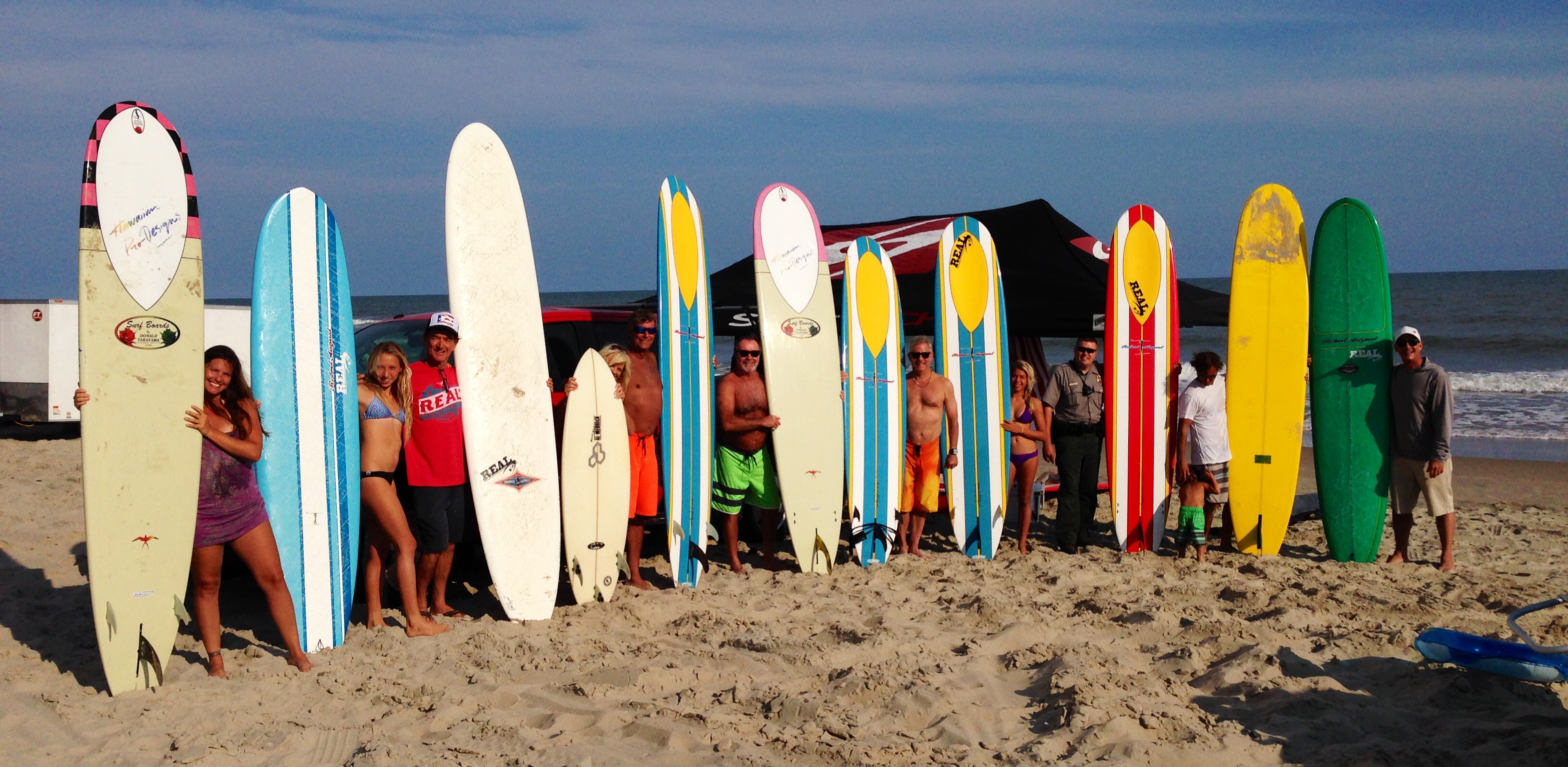
Loftier Performance Longboards (HPLBs) typically have flat or concave bottoms and a narrower outline with a 2+1, Quad or 4+ane fin fix upwardly. Loftier Performance longboards are designed to generate speed and travel faster than the moving ridge. They are perfect for surfing your longboard "like a shortboard", meaning off the tail, working the moving ridge upwardly and downwards the face to generate speed. They are easier to surf in pitchy, hollow faced waves due to the fact that they commonly take narrower noses and more rocker, allowing them to fit into the curve of the wave meliorate. This as well makes them a better "starting time lath" pick for surfers learning to surf in this type of wave.
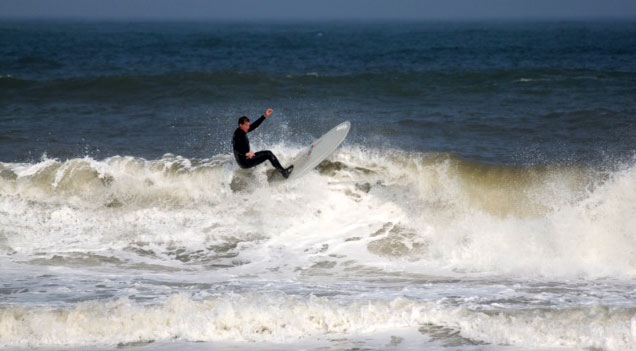
The design focus of high performance longboards is max speed and maneuverability, so in a lot of ways, very like to the pattern focus of shortboards. Skilled surfers tin noseride them, but they don't offer the added stability and lift up at that place and so it has to exist a skilled rider with very nimble (and calorie-free) footwork. These boards are designed for max functioning while planning, and so if the waves are super small and gutless, they don't feel as good in the trimming or glide fashion (non turning to generate speed). However, if you are purchasing a single board for max range with regards to wave size, these boards have the widest range of use of any board on the market, as yous tin surf them effectively from shin high upwardly to several times overhead – if your coconuts are big enough for that.
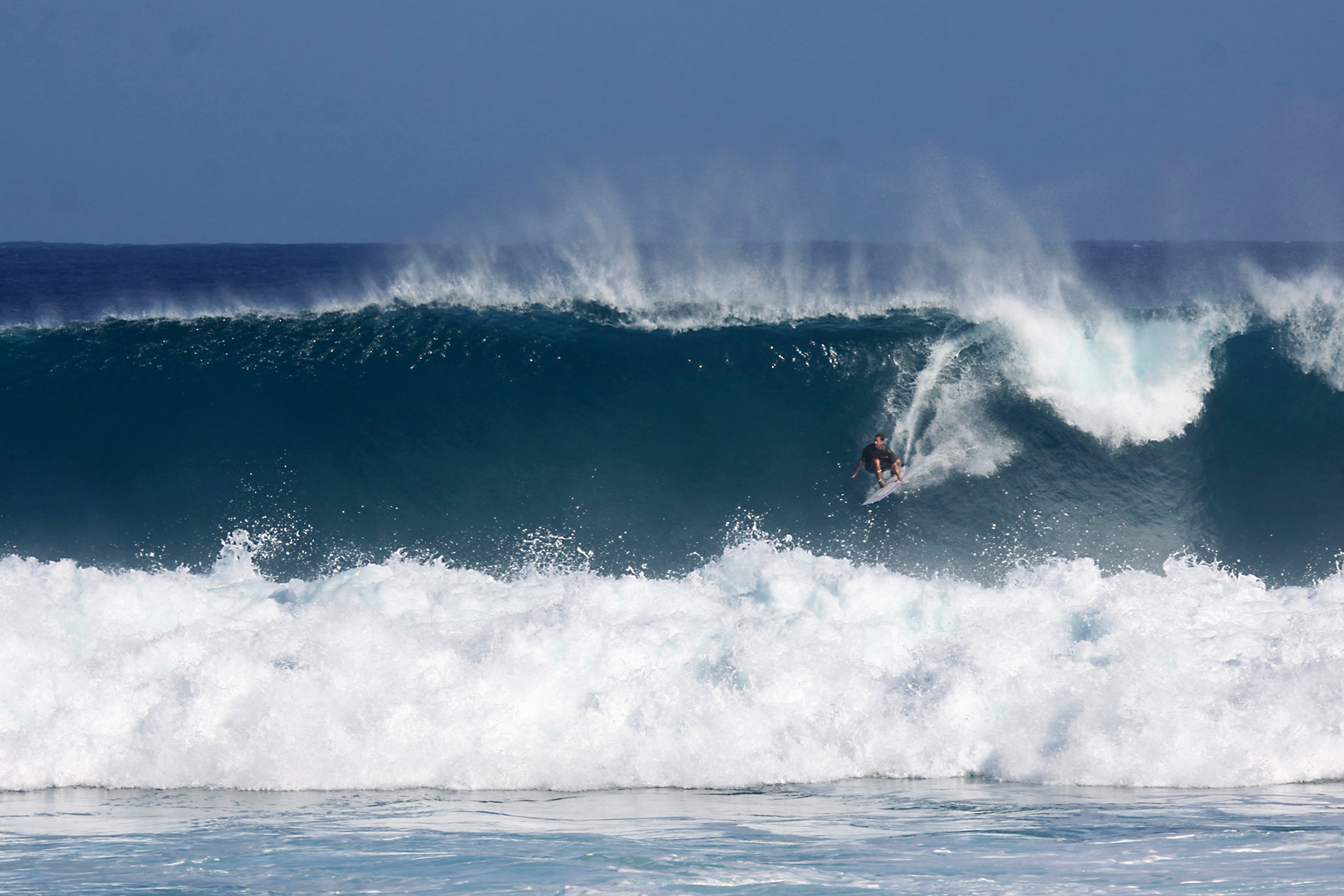
Great examples of HPLBs are the Stretch HPLB, Ricky Carroll HPLB, Maurice Cole HPLB and the Takayama Noa Kai Oi.
Simply like with every other surfboard category, dividing lines are disappearing and board designs are at present pulling characteristics from different designs to produce "Hybrid Designs". The Takayama In the Pinks are a perfect instance of this. Noserider shape and volume, with a crisp, defined rail release in the tail and a 2+1 fin set. This allows the board to become up and really become when you need it to. The smaller Robert August What I Rides (9'0 and smaller) as well take a clean, defined rail release on the tail to assist these boards attain higher speeds in medium to larger surf. These 2 boards are the about popular noserider and all around longboard in the earth. Goes to prove what happens when you take the best of both worlds and brew it upwards into one board!
Question #2 : Why do some of these boards have rounded rail while other accept precipitous edges? What's upwardly with all the dissimilar tail shapes?
Noseriders typically have rounded rails the unabridged length of the board, significant there is no well-baked border to release the water cleanly on the back third of the board like on HPLBs or shortboards. This slows the board downwards and keeps it shut in the pocket while the surfer is on the olfactory organ. You volition often run into larger square tails on noseriders, specially ones being ridden in smaller, less powerful surf. The larger the tail, the more lift information technology creates for generating speed, but besides the larger platform it creates for the lip of the wave landing ON IT – which counter balances you upward on the olfactory organ.
HPLBs have a crisp edge on the tail of the board, which creates a clean release of the water off the tail – assuasive the board and surfer to generate speeds much higher than the speed of the wave. On the HPLBs you will meet a variety of tail shapes and areas in order to max out the performance in a specific wave range/type or to provide the max range for all uses. Regardless of the tail shape (squash, round, round pin, swallow) the larger the tail, the better the board volition work in small to average surf. If you lot are using the lath for larger, more powerful surf, or fifty-fifty using it as a double duty gun for BIG surf, you want to await at reducing the tail surface area and so that the lath doesn't become too lifty underfoot and start billowy at speed.
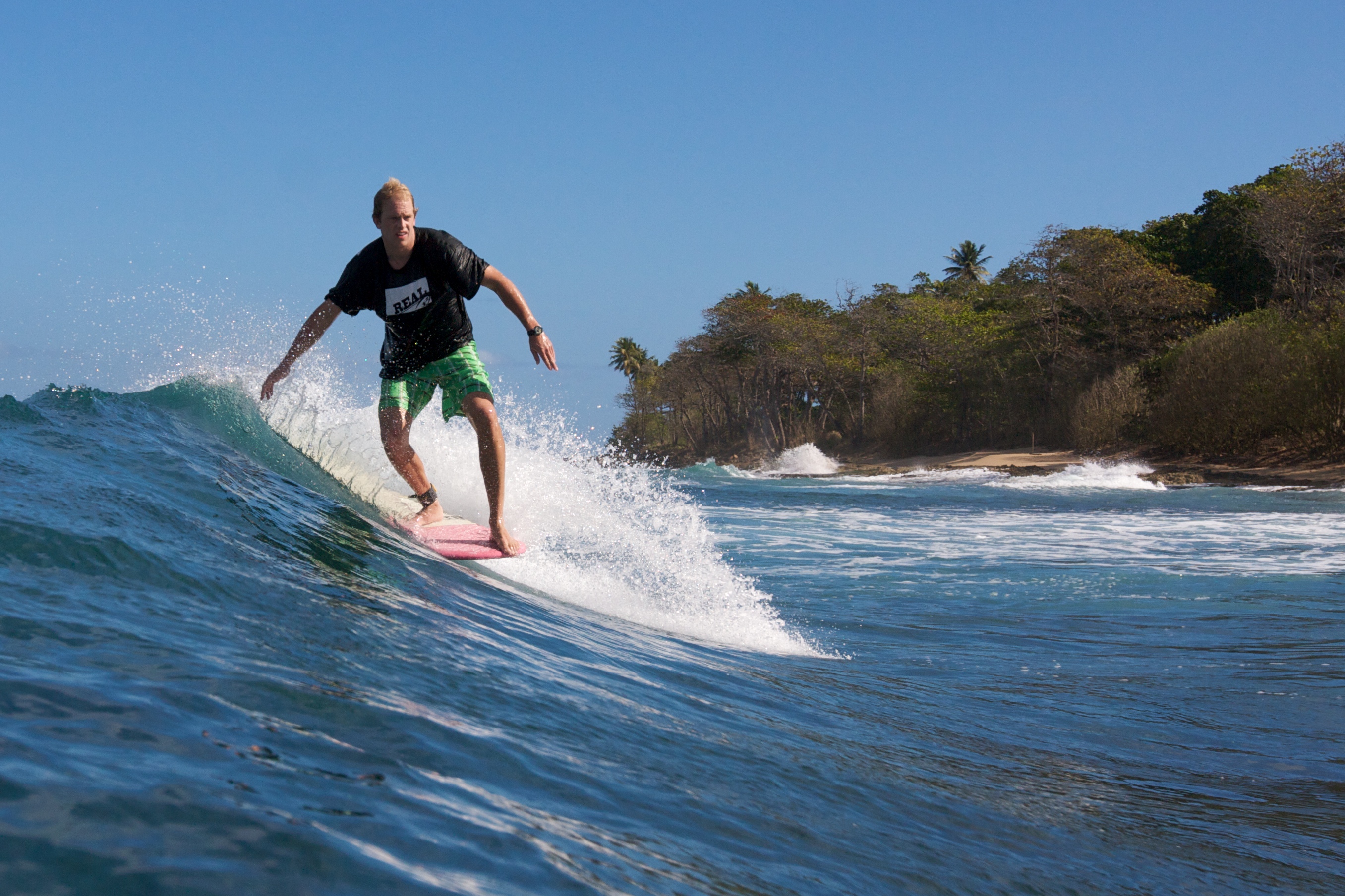
Question #iii: Why are at that place different fin set-ups?
Noseriders accept single fins, which are typically a petty slower (a good thing for keeping the board in the pocket of the wave) and offering a deeper depth to stay in the water when yous are up on the nose and lifting the tail. The single fins likewise take a sleeker feel when you are trimming and gliding in sub par surf. The tell tale signs of a noserider is rounded rail to the tail with a overnice single fin.
HPLBs typically have two+ane, Quad, or four+ane fin set-ups. None of these are better than the other, what you are looking for is the best lucifer for the design of the lath, your surfing style and the waves you are looking to surf the board on. All of these fin configurations are designed to aid generate more speed and increase maneuverability when compared to unmarried fins.
Question #4: What's the right size for me??
This is an like shooting fish in a barrel one! In general, lightweights should look at the viii'half-dozen range. Midweights 9'0 and Heavy weights 9'vi. Super heavyweights? Either beef out your ix'six with a bit more width and thickness, or go longer up to 10'. All of these measurements are non "exact". If y'all are a lightweight and find an awesome eight'iv – 8'7", get for information technology! Once yous go above 10', near surfers will take a difficult fourth dimension controlling the extra length, although the skilled surfer will revel in the extra glide!
Question #5: Construction
There are several constructions to cull from when shopping for a longboard. PU/Poly is the tried and truthful structure that has been around the longest. PU/Poly has a nice feel both in small moving ridge "glide" mode and as well at max speed when bouncing and churr get a concern. PU/Poly is also the most fragile and the heaviest. If you have a problem with "spacial awareness" (meaning you lot just don't know what a 9 pes turning radius circle is), y'all will probably spend more than fourth dimension repairing this blazon of board than actually surfing information technology once y'all go done walking information technology into every corner of your garage. The added weight tin too be a drag for lighter built surfers who have to carry their boards long distances to the beach.
Epoxy sandwich constructions offer a lighter weight / college durability board that offer great performance with very petty maintenance and a very long life. This structure is a swell choice for no nonsense, all fun, all the fourth dimension recreation, or sharing your board with a family or grouping of friends, where y'all might not always know how the lath is beingness treated. True afficionados volition say you HAVE TO GO PU/Poly in order to have a "real" board, just information technology'due south better to be honest with yourself and how you care for your gear. If you are conscientious with keeping something in good shape then yous can consider a PU/Poly lath. If you are a train wreck and tend to swallow gear rather than shine it, then epoxy sandwich might be the best way to go, peculiarly on your first board.
Existent is fully stocked with a broad selection of longboards from Robert Baronial, Takayama, Ricky Carroll, Stretch, McTavish and more. Existent ships longboards worldwide daily.
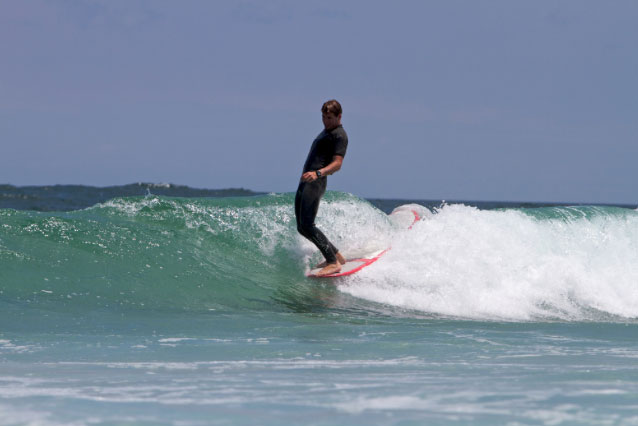
Questions? Comments? You can mail below or phone call us cost costless at 866-REAL-548, or International 252-987-6000.
What Size Longboard Surfboard Should I Get,
Source: https://www.realwatersports.com/blogs/news/how-to-choose-a-longboard
Posted by: rossantouch.blogspot.com


0 Response to "What Size Longboard Surfboard Should I Get"
Post a Comment